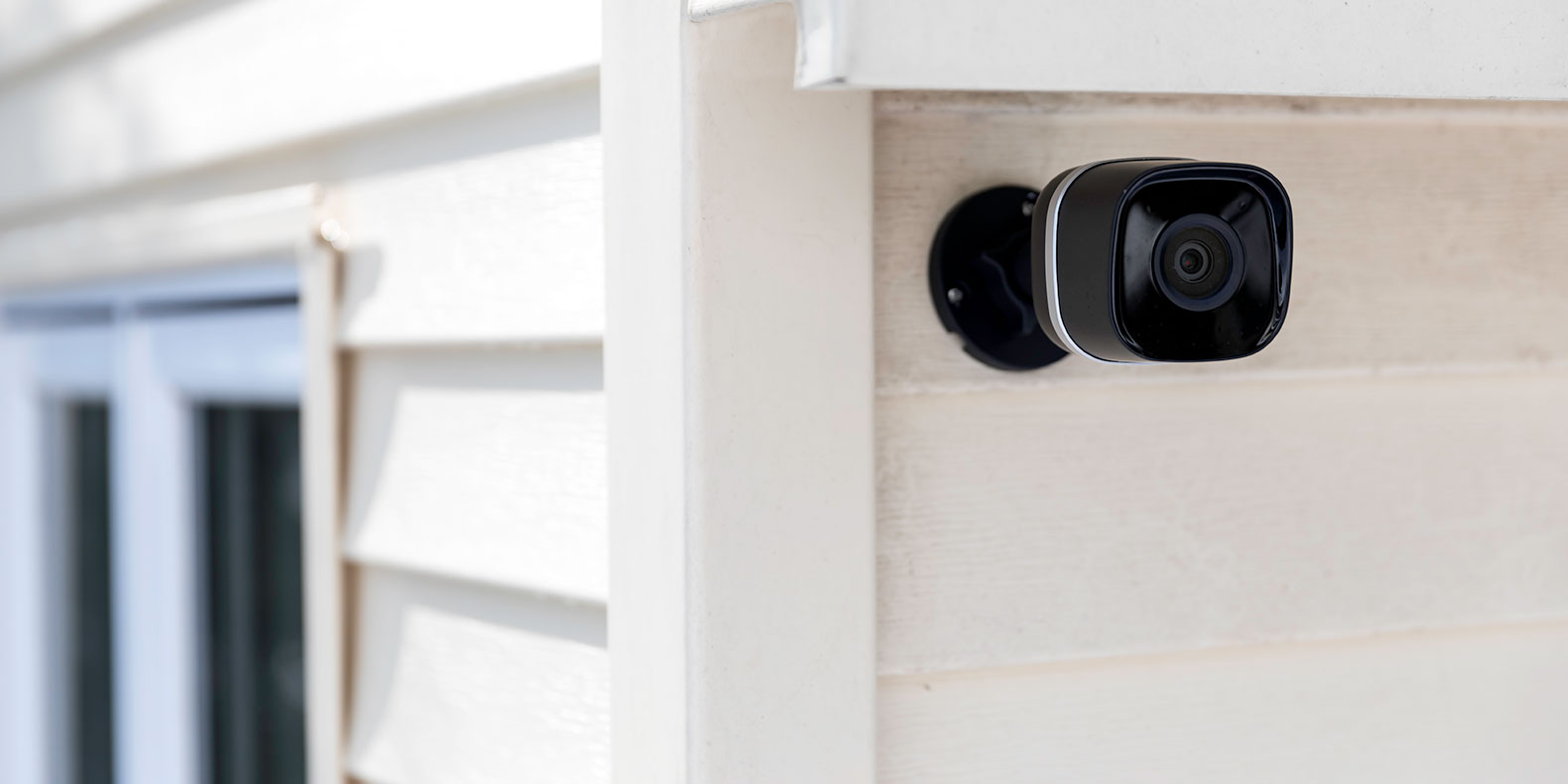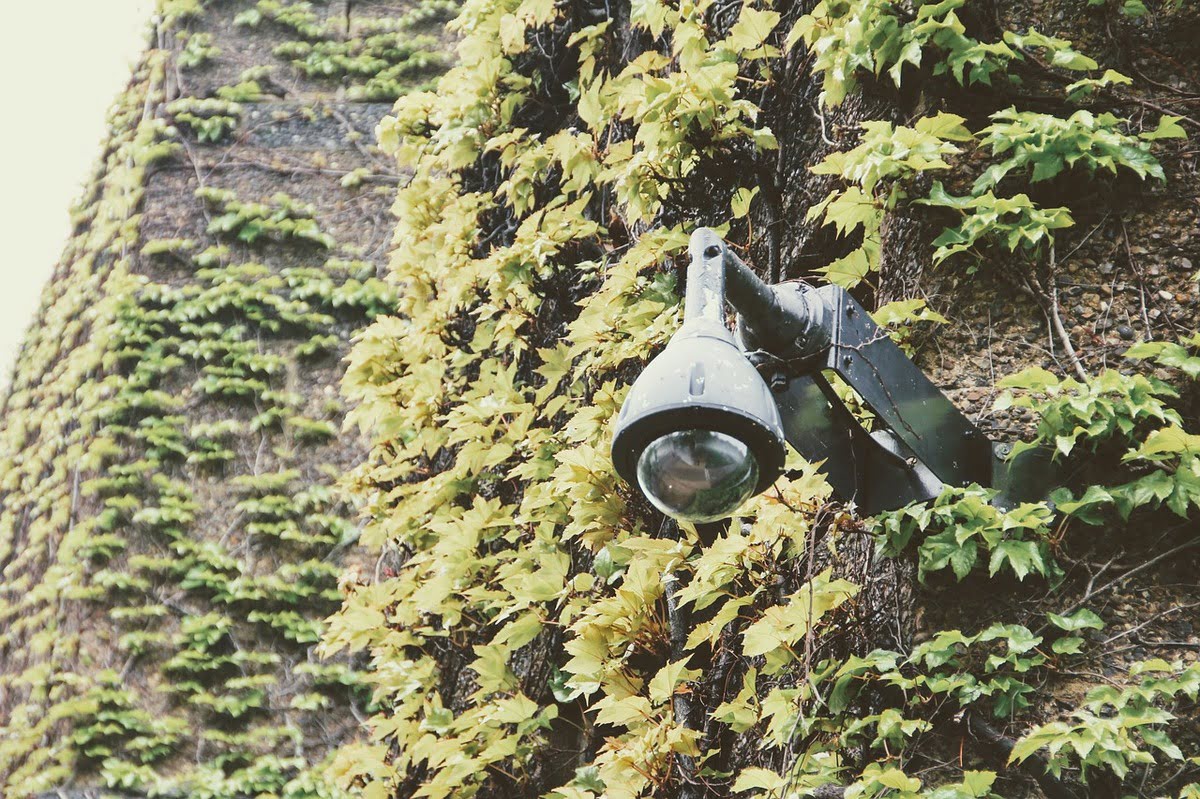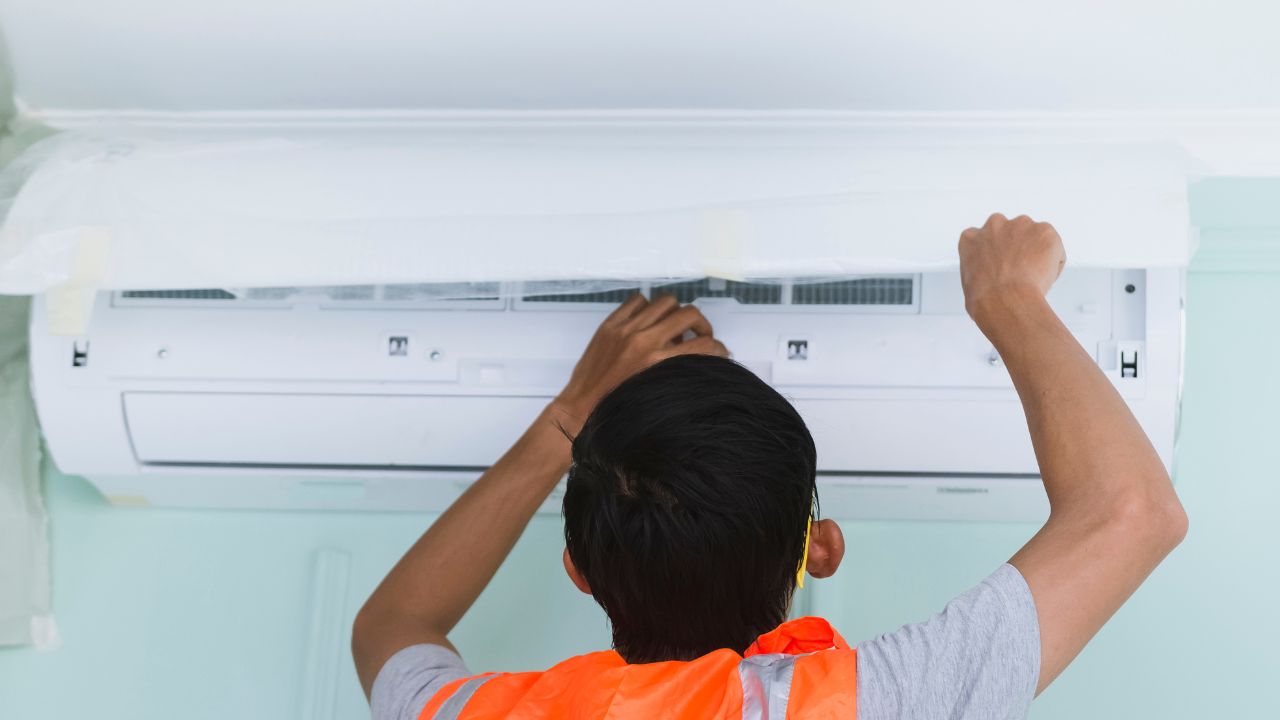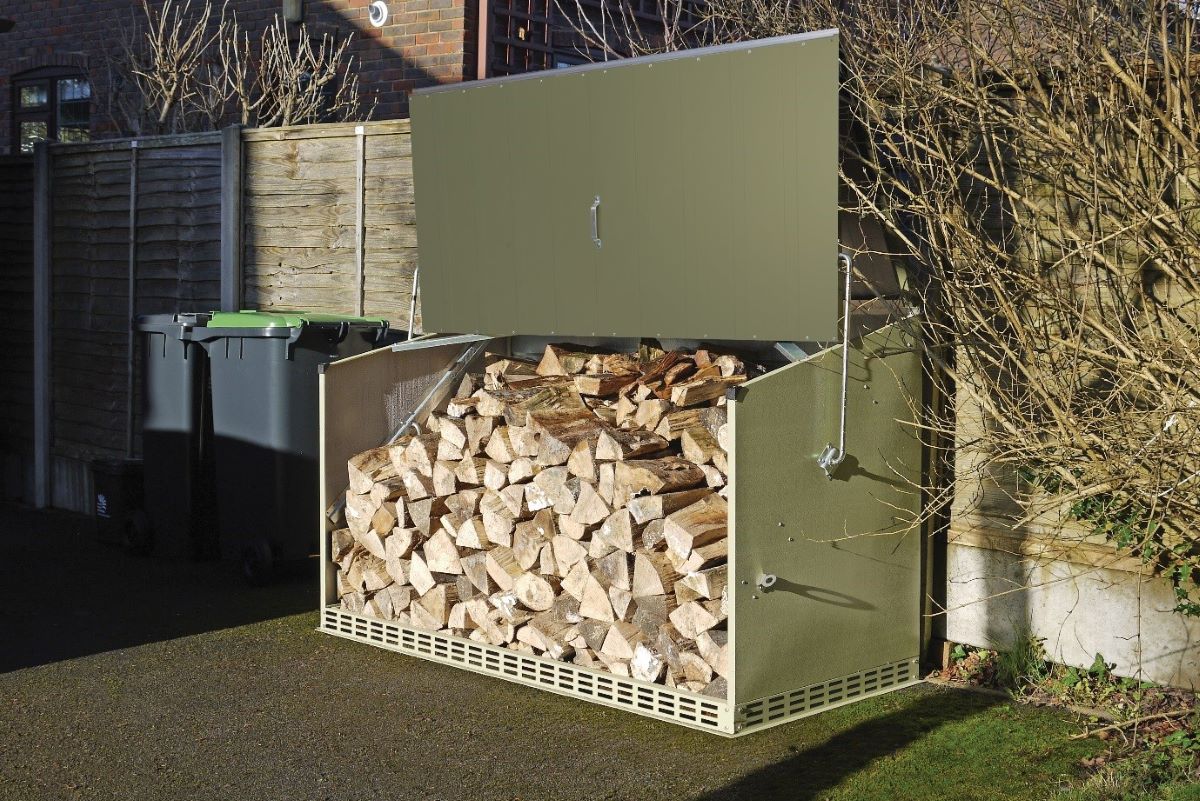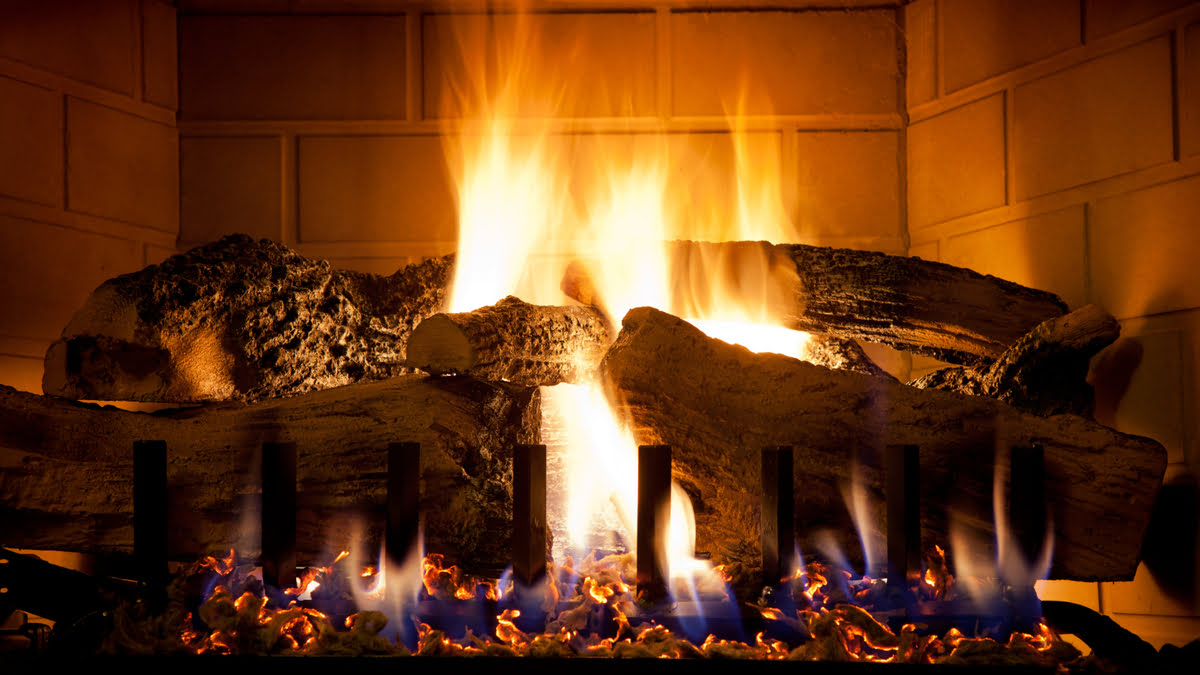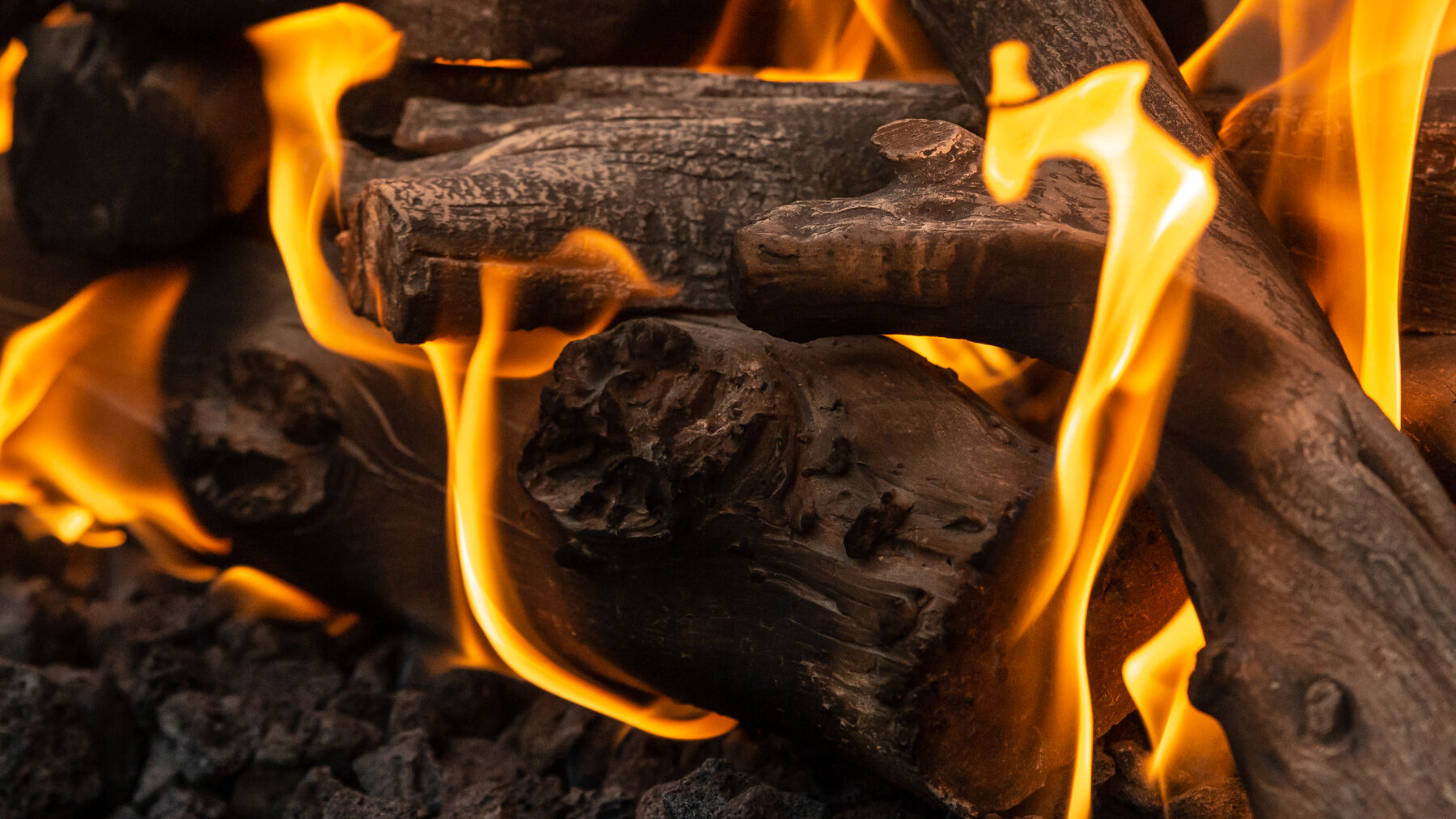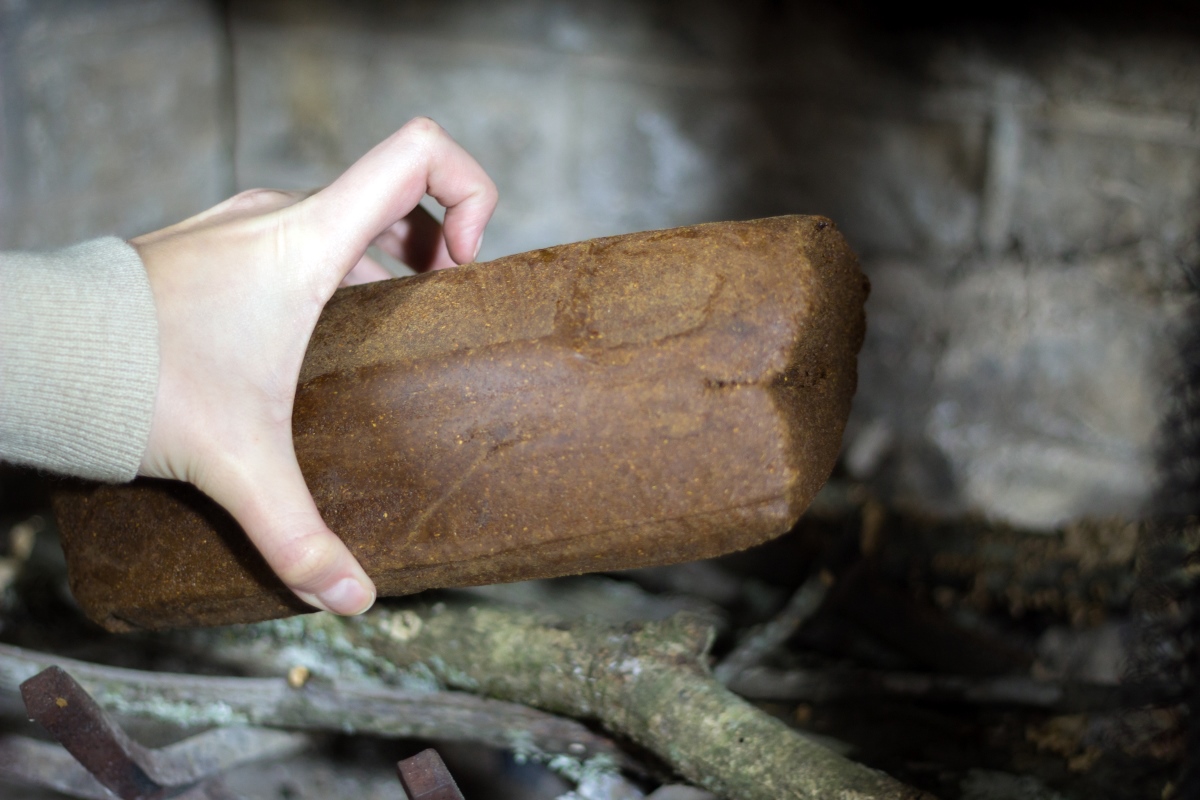Home>Home Maintenance>How To Find Log Home Repair
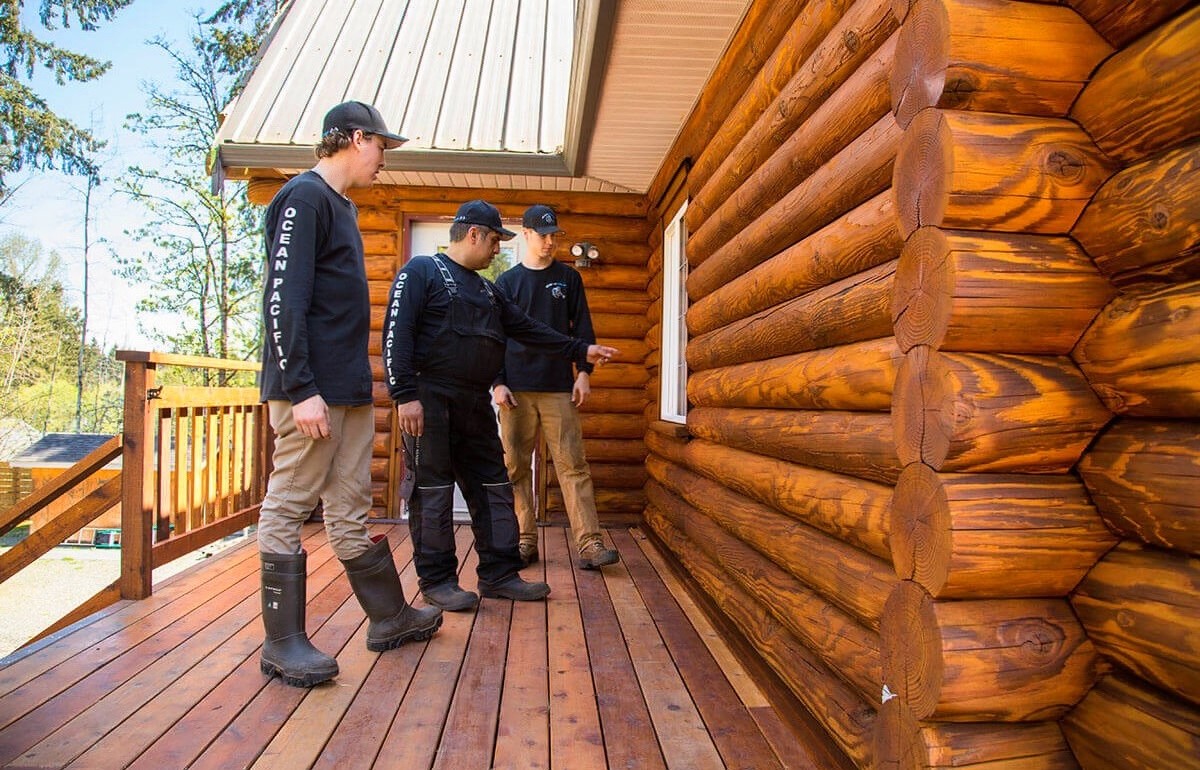

Home Maintenance
How To Find Log Home Repair
Modified: August 16, 2024
Learn how to find and hire log home repair experts for all your home maintenance needs. Improve the condition and longevity of your log home with professional repairs.
(Many of the links in this article redirect to a specific reviewed product. Your purchase of these products through affiliate links helps to generate commission for Storables.com, at no extra cost. Learn more)
Introduction
Welcome to the world of log homes! The unique charm, warmth, and rustic appeal of log homes have made them a popular choice for homeowners seeking a distinctive and natural living space. However, like any other type of home, log homes require regular maintenance and occasional repairs to keep them in optimal condition.
In this article, we will explore the ins and outs of log home repairs. Whether you are a proud log home owner or considering purchasing a log home, understanding the essentials of log home repair is essential for maintaining its beauty and longevity.
From assessing log home repairs and identifying common log home damage to finding professional log home repair services and exploring DIY repair techniques, we will cover all aspects of log home repair. Additionally, we will share important tips on log home maintenance and highlight common mistakes to avoid when tackling log home repairs.
So, let’s dive in and discover how to find log home repair solutions that will keep your cherished abode looking its best for years to come.
Key Takeaways:
- Regularly assess and address log home repairs to prevent further damage and maintain its beauty and stability. Seek professional help when needed and prioritize repairs based on urgency.
- Keep your log home well-maintained by regularly cleaning, inspecting for damage, and managing moisture. Proactively address issues to preserve its beauty and structural integrity.
Read more: How To Log Out Of Google Home
Assessing Log Home Repairs
Before embarking on any log home repair project, it is crucial to assess the extent of the damage. This assessment will help you determine the scope of the repairs needed and the best course of action. Here are some key steps to assess log home repairs:
- Visual Inspection: Start by visually inspecting your log home, both from the outside and inside. Look for signs of decay, rot, cracks, gaps, insect infestations, or water damage. Pay special attention to the foundation, roof, walls, windows, and doors.
- Moisture Testing: Moisture is the enemy of log homes and can cause significant damage if left unaddressed. Use a moisture meter to test the moisture levels in the logs. Ideally, the moisture content should be below 20%. Higher moisture levels indicate potential issues that need to be addressed.
- Structural Assessment: Check the structural integrity of your log home. Examine the foundation for any signs of settling or shifting. Inspect load-bearing logs for signs of deterioration or damage that could compromise the stability of your home.
- Energy Efficiency Evaluation: Assess the energy efficiency of your log home. Look for gaps, cracks, or insufficient insulation that may contribute to energy loss. This evaluation will help you identify areas where repairs or upgrades are necessary to improve energy efficiency.
Once you have completed the assessment, make a list of the repairs and prioritize them based on urgency and importance. Some repairs may require immediate attention to prevent further deterioration, while others can be addressed over time. Remember to consult with professionals, such as log home contractors or inspectors, if you are unsure about any aspects of the assessment.
Assessing log home repairs thoroughly will ensure that you have a clear understanding of the work that needs to be done and can plan accordingly. It will also help you communicate effectively with log home repair professionals or guide you in DIY repair projects.
Identifying Log Home Damage
Identifying log home damage is a crucial step in determining the necessary repairs. By understanding the signs of damage, you can address issues promptly and prevent further deterioration. Here are some common types of log home damage to look out for:
- Rot and Decay: Logs are susceptible to rot and decay, particularly in areas with high moisture levels. Look for areas of discoloration, softness, or fungal growth on the logs. Pay attention to corners, joints, and areas where water can accumulate.
- Cracks and Checks: Over time, log homes may develop cracks and checks, which are natural occurrences due to the contraction and expansion of the logs. However, significant cracks that compromise the structural integrity or allow water infiltration should be addressed.
- Insect Infestations: Wood-boring insects such as termites, carpenter ants, or beetles can cause significant damage to log homes. Look for small holes, sawdust piles, or signs of insect activity on the logs.
- Water Damage: Water damage is a common issue in log homes. Inspect the logs for signs of water stains, mildew, or mold growth. Check for leaking roofs, faulty gutters, or poor drainage that may contribute to water infiltration.
- Settling and Shifting: Log homes may settle or shift over time due to factors like soil movement or inadequate support. Look for uneven gaps between logs, doors or windows that no longer close properly, or cracks in the foundation.
- Chinking and Sealing Issues: Chinking and sealing are essential for maintaining the integrity and energy efficiency of log homes. Inspect the chinking and sealing materials for any gaps, cracks, or deterioration.
It’s important to note that not all damage requires immediate repairs. Minor cracks or small insect holes may be cosmetic issues that don’t affect the overall structure. However, it’s crucial to monitor these areas and take action if they worsen or lead to further issues.
If you are unsure about the extent or severity of the damage, consider consulting with a professional log home inspector or contractor. They can provide expert advice and help you determine the best course of action for repairing the identified damage.
By effectively identifying log home damage, you can develop a comprehensive plan for repairs and ensure the long-lasting beauty and stability of your log home.
Finding Professional Log Home Repair Services
When it comes to log home repairs, it’s often best to entrust the work to professionals who specialize in log home maintenance and restoration. Finding reliable and experienced log home repair services can be crucial in ensuring that the repairs are done effectively and to the highest standards. Here are some tips to help you find the right professionals for your log home repair needs:
- Do Your Research: Start by conducting thorough research on log home repair companies in your area. Look for companies with a solid reputation and extensive experience in log home repairs. Check their websites, read customer reviews, and ask for recommendations from other log home owners.
- Check Credentials: Verify the credentials of log home repair professionals before hiring them. Ensure that they are licensed, insured, and properly certified in log home repairs. This will provide you with peace of mind and protection in case of any unforeseen issues or accidents during the repair process.
- Specialization in Log Homes: Log homes have unique construction and maintenance requirements compared to traditional homes. Look for professionals who specialize in log homes specifically. They will have the knowledge, skills, and experience necessary to handle log home repairs effectively.
- Ask for References: Request references from log home repair companies before making a decision. This will allow you to speak with their previous clients and get firsthand feedback on the quality of their workmanship, professionalism, and customer service.
- Obtain Multiple Quotes: It’s a good practice to obtain quotes from multiple log home repair companies. This will not only help you compare prices but also give you an idea of the different services and approaches offered by each company. However, be cautious of extremely low-priced quotes, as they may indicate subpar work or the use of inferior materials.
- Request a Detailed Scope of Work: Once you’ve narrowed down your options, ask the selected log home repair companies for a detailed scope of work. This should include a thorough explanation of the repairs needed, the materials to be used, and the estimated timeline of the project. It’s important to have a clear understanding of what the repairs will entail and how long they will take to complete.
- Communication and Professionalism: Pay attention to the communication and professionalism of the log home repair companies you’re considering. Prompt responses, clear communication, and a professional approach are indicators of a reliable and reputable service provider.
By following these guidelines, you can find professional log home repair services that meet your needs and ensure that your log home is in capable hands. Remember to take your time, do thorough research, and make an informed decision to protect your investment and maintain the beauty of your log home.
Researching Log Home Repair Options
Researching log home repair options is an important step in finding the right solution for your specific repair needs. By exploring different repair methods, materials, and techniques, you can make informed decisions that best fit your log home’s requirements. Here are some key aspects to consider when researching log home repair options:
- Repair Methods: There are various methods used in log home repairs, such as epoxy repair, log replacement, or log reinforcement. Research and understand the pros and cons of each method to determine which one is suitable for your specific repair needs.
- Materials: Log home repairs require specific materials to ensure durability and proper restoration. Familiarize yourself with the different types of sealants, preservatives, chinking compounds, and stains available for log home repairs. Consider the compatibility of these materials with your log home’s existing structure and finishes.
- Log Home Restoration Techniques: In some cases, log home repairs may involve restoration or refinishing to bring back the original beauty of the logs. Research the various techniques used in log home restoration, such as media blasting, sanding, or chemical stripping, to understand the best approach for your log home.
- Environmental Considerations: Log home repairs should take into account the environmental impact and sustainability. Look for eco-friendly repair options that use environmentally conscious materials and techniques. This includes choosing products that are low in volatile organic compounds (VOCs) and opting for sustainable wood sources, if log replacement is required.
- Expert Opinions and Case Studies: Seek out expert opinions and case studies on log home repairs. This can be in the form of books, articles, online forums, or videos. Learning from the experiences of others who have dealt with similar log home repair issues can provide valuable insights and guidance.
- Consultation with Professionals: If you find yourself overwhelmed or uncertain about the best repair options for your log home, consider consulting with log home repair professionals or contractors. They can assess your specific situation and provide expert advice tailored to your log home’s needs.
- Budget Considerations: Researching log home repair options also involves considering your budget. Compare the costs associated with different repair methods and materials. Keep in mind that investing in quality repairs will provide long-term benefits, preserving the value and structural integrity of your log home.
By thoroughly researching log home repair options, you can make well-informed decisions that align with your log home’s unique needs and ensure a successful and effective repair process.
Read also: 8 Incredible Chimney Cleaning Logs For 2025
Evaluating Log Home Repair Costs
Evaluating the costs of log home repairs is essential for setting a budget and making informed decisions about the repair process. Log home repair costs can vary depending on the extent of the damage, the repair method used, and the materials required. Here are some factors to consider when evaluating log home repair costs:
- Extent of Damage: The severity and extent of the damage will play a significant role in determining the overall repair costs. Minor repairs, such as filling small cracks or replacing a few logs, will typically be less expensive than extensive repairs involving multiple areas of the log home.
- Cost of Materials: Research and compare the cost of the materials required for the repairs. This includes sealants, preservatives, chinking compounds, and any other materials needed for the specific repair method. Be sure to consider both the quality and the quantity required for your log home.
- Labor Costs: Take into account the labor costs associated with log home repairs. The complexity of the repairs, the time required for completion, and the expertise of the professionals involved will all contribute to the labor costs. Obtain quotes from reputable log home repair contractors to have a clear idea of the labor expenses.
- Additional Expenses: Consider any additional expenses that may arise during the repair process. This could include the cost of temporary housing or alternate living arrangements, if necessary, during extensive repairs. It’s also important to factor in any permits or inspections required by local authorities.
- Long-Term Benefits: While log home repairs may incur certain upfront costs, it’s important to consider the long-term benefits and savings they provide. Properly addressing log home damage can prevent further deterioration, potentially saving you from more expensive repairs in the future. It can also preserve the value of your log home and contribute to its longevity.
- Comparing Quotes: Obtain multiple quotes from different log home repair professionals to compare costs and services. However, keep in mind that the lowest quote may not always guarantee the best quality. Take into account the reputation, experience, and expertise of the professionals when evaluating the quotes.
- Budget Allocation: Evaluate your overall budget and allocate a realistic amount for log home repairs. It’s important to strike a balance between investing in quality repairs and staying within your budget constraints. If necessary, consider prioritizing repairs based on urgency and the potential impact on the log home’s structural integrity.
By carefully evaluating log home repair costs, you can make informed decisions that align with your budget while ensuring that the necessary repairs are completed to the highest quality standards. Remember that investing in proper log home repairs is an investment in the long-term value and durability of your cherished log home.
Tip: When looking for log home repair, research local contractors with experience in log home maintenance. Look for reviews and ask for references to ensure quality work.
Hiring a Log Home Repair Contractor
Hiring a log home repair contractor is a crucial step in ensuring that your log home repairs are carried out professionally and to the highest standards. With the right contractor, you can have peace of mind knowing that your log home is in capable hands. Here are some tips to help you hire a log home repair contractor:
- Research: Start by conducting thorough research on log home repair contractors in your area. Look for established contractors with a solid reputation and extensive experience in log home repairs. Check their websites, read customer reviews, and ask for recommendations from other log home owners.
- License and Insurance: Verify that the log home repair contractor is licensed and insured. A license ensures that the contractor has met certain requirements and has the necessary expertise to perform the repairs. Insurance protects you from any liability in case of accidents or damages that may occur during the repair process.
- Specialization in Log Homes: Choose a contractor who specializes in log home repairs. Log homes have unique construction and maintenance requirements, so it’s crucial to hire someone with specific experience and knowledge in log home repairs. This will ensure that they understand the intricacies of log home construction and can perform the repairs effectively.
- Portfolio and References: Ask the log home repair contractor for their portfolio and references. A reputable contractor will gladly provide examples of their previous work and references from satisfied clients. Contact those references and inquire about the quality of the work, professionalism, and timeliness of the contractor.
- Written Estimates: Obtain written estimates from multiple log home repair contractors. This will allow you to compare the costs, scope of work, and timeline for completion. Make sure the estimates include all the necessary repairs and specify the materials and techniques that will be used.
- Contract and Warranty: Before hiring a log home repair contractor, make sure to have a written contract detailing the scope of work, timeline, and payment terms. The contract should also clearly state any warranties or guarantees provided by the contractor for their workmanship and the materials used.
- Communication and Collaboration: Effective communication is essential when working with a log home repair contractor. Choose a contractor who listens to your concerns, answers your questions promptly, and keeps you informed throughout the repair process. Collaboration and open communication will ensure that the repairs meet your expectations.
- Trust and Gut Feeling: Trust your instincts when hiring a log home repair contractor. Look for a contractor who demonstrates professionalism, honesty, and integrity. A good rapport and positive gut feeling can go a long way in establishing a successful working relationship.
Hiring a reputable log home repair contractor will provide you with the expertise and assurance that your log home repairs will be done properly. Take your time, do your due diligence, and choose a contractor who aligns with your needs and expectations.
DIY Log Home Repair Techniques
While some log home repairs are best left to professionals, there are certain DIY log home repair techniques that homeowners can tackle themselves. By taking a hands-on approach, you can save money and feel a sense of accomplishment in maintaining your log home. Here are some common log home repair techniques that you can consider:
- Filling Cracks and Checks: Small cracks and checks in the logs can be filled using a quality log caulking or chinking product. Clean out the cracks, apply the caulk or chinking compound, and smooth it out for a neat finish. This helps prevent moisture and air infiltration while maintaining the structural integrity of the logs.
- Staining and Sealing: Regularly staining and sealing the logs is important for preserving their beauty and protecting them from the elements. Clean the logs thoroughly, and apply a log stain and sealer according to the manufacturer’s instructions. This DIY technique helps maintain the log home’s appearance and prolong its lifespan.
- Replacing Rotted Logs: If you have the necessary skills and tools, you can attempt to replace rotted logs on your own. Start by carefully removing the damaged logs and ensuring that the surrounding logs are in good condition. Cut a new log to the appropriate size and fit it in place, securing it with screws or lag bolts. Ensure proper sealing and finishing to maintain the integrity of the log home.
- Applying Wood Preservatives: Wood preservatives help protect the logs from rot, decay, and insect infestations. Apply a quality wood preservative to the logs using a brush or sprayer, following the manufacturer’s instructions. This DIY technique helps combat common log home issues and prolongs the lifespan of the logs.
- Improving Energy Efficiency: Enhancing the energy efficiency of your log home is a DIY project that can save you money on utility bills. Seal any gaps or cracks between logs using weatherstripping or caulking. Install weatherproofing strips around doors and windows, and ensure proper insulation in the walls and roof. These improvements help reduce energy loss and increase the comfort of your log home.
- Preventing Insect Infestations: Regularly inspecting your log home and taking preventive measures can help deter insect infestations. Apply insect repellents or borate wood treatments to the logs to discourage wood-boring insects. Keep firewood stored away from the log home to prevent attracting insects. Monitoring and early detection are key in preventing extensive damage.
It’s important to note that DIY log home repairs require proper knowledge, equipment, and safety precautions. If you are unsure or uncomfortable with any aspect of a repair project, it’s best to consult with a professional log home repair contractor to avoid any potential mistakes or further damage.
By taking on certain log home repairs yourself, you can maintain the beauty and integrity of your log home while building your DIY skills and saving on repair costs.
Common Log Home Repair Mistakes to Avoid
When it comes to log home repairs, avoiding common mistakes is crucial in maintaining the beauty and structural integrity of your home. Here are some common log home repair mistakes to be aware of and avoid:
- Ignoring Regular Maintenance: Neglecting regular maintenance is one of the biggest mistakes homeowners make. Regularly inspecting your log home, addressing minor issues promptly, and performing routine maintenance tasks will prevent small problems from escalating into major repairs.
- Using Incorrect or Incompatible Materials: Choosing the wrong materials or using incompatible products for log home repairs can lead to poor results and further damage. Always use the recommended materials for your specific log home and consult professionals for guidance if you are unsure.
- Failing to Address Water Issues: Water is the main enemy of log homes. Failing to address water issues, such as leaks, poor drainage, or improper gutter systems, can lead to rot, decay, and extensive damage to the logs. Always address water-related issues promptly and ensure that your log home has proper moisture management systems in place.
- Overlooking Pest Problems: Wood-boring insects such as termites and carpenter ants can cause significant damage to log homes. Ignoring signs of pest infestation or failing to take preventive measures can lead to costly repairs. Regularly inspect your log home for signs of insect activity and seek professional pest control services as needed.
- Improper Log Restoration: Log restoration requires specific techniques and expertise. Attempting to restore or refinish logs without the proper knowledge and experience can result in uneven staining, improper sealing, or damage to the logs. It’s best to leave log restoration to professionals who specialize in log home maintenance and restoration.
- Skipping Proper Preparation: Proper preparation is essential for successful log home repairs. Whether it’s cleaning the logs, removing old caulking or chinking, or prepping the surface for staining, skipping the preparation process can lead to subpar results and reduced durability of the repairs.
- Failure to Seek Professional Help When Needed: While there are DIY log home repairs you can tackle, it’s important to recognize your limitations. Attempting complex repairs or structural issues without the necessary skills and knowledge can result in further damage to your log home. When in doubt, consult with professionals to ensure the repairs are done correctly and safely.
By avoiding these common log home repair mistakes, you can maintain the longevity and beauty of your log home while preventing costly repairs in the future. Remember that seeking professional advice and staying on top of regular maintenance are key to preserving the integrity of your cherished log home.
Log Home Maintenance Tips
Maintaining your log home is vital for its longevity, beauty, and structural integrity. By following these log home maintenance tips, you can ensure that your home remains in optimal condition for years to come:
- Regular Cleaning: Regularly clean your log home to remove dirt, dust, pollen, and other debris that can accumulate on the logs. Use a soft-bristle brush or a low-pressure power washer and a mild log cleaner to gently scrub the logs. Rinse thoroughly and allow the logs to dry completely.
- Inspecting for Damage: Conduct routine inspections to spot any signs of damage, including rot, decay, cracks, or insect activity. Pay special attention to vulnerable areas such as corners, joints, and the foundation. Promptly address any identified issues to prevent further damage.
- Maintaining the Finish: Regularly maintain the finish of your log home by restaining or resealing the logs as needed. This helps protect the logs from moisture and UV damage. Follow the manufacturer’s instructions for proper application of log stains or sealants and consider applying a fresh coat every few years.
- Managing Moisture: Moisture is the enemy of log homes. Ensure proper moisture management by keeping the gutters clean and functional, directing downspouts away from the logs, and addressing any leaks or drainage issues promptly. Properly ventilate the interior of your log home to prevent excess moisture buildup.
- Regularly Chinking and Sealing: Inspect the chinking and sealing materials between the logs and address any gaps, cracks, or deterioration. Properly maintained chinking and sealing ensure a tight and weather-resistant seal, preventing air and water infiltration.
- Maintaining the Roof: Regularly inspect and maintain the roof of your log home. Clean the gutters, check for any loose or damaged shingles, and address any roof leaks promptly. A well-maintained roof prevents water damage and prolongs the life of your log home.
- Pest Prevention: Take preventive measures to keep wood-boring insects and other pests at bay. Regularly inspect your log home for signs of infestation, seal any cracks or gaps, and consider using pest repellents or treatments recommended for log homes.
- Proper Landscaping: Properly manage the landscaping around your log home to prevent overgrowth and excessive moisture retention near the logs. Trim trees and shrubs away from the logs, maintain proper drainage, and avoid planting vegetation that can damage the logs or attract pests.
- Monitoring Exterior Finishes: Regularly monitor exterior finishes such as decks, porches, and railings for signs of wear and damage. Properly maintain these areas by refinishing, resealing, or repairing as needed to ensure the overall integrity and appearance of your log home.
- Keeping Interior Conditions Stable: Maintain stable interior conditions by controlling humidity levels and temperature. Fluctuations in humidity can cause the logs to expand and contract, leading to log movement and potential issues. Use heating, cooling, and humidification systems to keep the interior environment comfortable and stable.
By implementing these log home maintenance tips, you can preserve the beauty, structural integrity, and value of your log home. Regular maintenance, inspections, and proactive measures are key to ensuring that your log home remains a cherished retreat for many years to come.
Conclusion
Maintaining and repairing a log home requires care, attention, and knowledge. By following the tips and techniques outlined in this article, you can ensure that your log home remains a beautiful and durable structure for years to come.
By assessing log home repairs and identifying the extent of damage, you can prioritize repairs and address them promptly. Finding professional log home repair services is essential for complex repairs, and thorough research ensures you hire the right experts for the job. Evaluating log home repair costs allows you to budget effectively and make informed decisions.
While some repairs may require professional help, there are also DIY log home repair techniques that homeowners can tackle. However, it’s important to avoid common mistakes and seek professional guidance when needed to ensure the best results.
Maintaining your log home is an ongoing process. Regular cleaning, inspections, and maintenance help preserve the beauty and integrity of the logs. Managing moisture, regularly staining and sealing, and preventing insect infestations are all part of log home maintenance. Proper care of the roof, landscaping, and interior conditions contribute to the overall health of your log home.
In conclusion, log home repair and maintenance are essential to preserve and enhance the beauty, comfort, and longevity of your log home. By being proactive, seeking professional help when needed, and staying vigilant, you can ensure that your log home remains a cherished retreat for generations to come.
Frequently Asked Questions about How To Find Log Home Repair
Was this page helpful?
At Storables.com, we guarantee accurate and reliable information. Our content, validated by Expert Board Contributors, is crafted following stringent Editorial Policies. We're committed to providing you with well-researched, expert-backed insights for all your informational needs.
